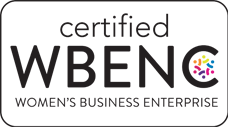
How To Craft A Value Proposition For A Brand
What Is A Value Proposition?
A value proposition is a statement that summarizes the benefits and economic value of a product or service for a customer. It explains why customers should choose your brand over competitors and why they should buy from you.
When creating your value proposition, you need to identify a pain point felt by your customers. Then tell potential customers why your brand is better positioned to address it than competitors.
Some of the elements of a great value proposition include:
- Relevance: Captures how your product can solve your customers’ problems.
- Specific value: Answers the question of why customers need to choose your brand over others.
- Customer connection: Explains how your brand meets the individual needs of every customer.
- Measurable: You can gauge the effectiveness of your value proposition using metrics like customer retention or conversion rates.
4 Steps To Create A Value Proposition
Wondering how to create a value proposition that will bring great results? Here are four key steps to follow:
Research Your Target Audience
Understanding your target audience is the key to delivering the right message that resonates with customers and one that doesn’t.
Before creating your value proposition, ask yourself the following questions:
- Who is the target of this value proposition?
- What do they care about?
- What are their needs and wants?
Answering these questions will help you better understand your target audience.
Make sure that you segment your target audience based on their demographics. This includes age, gender, location, interests, and specific needs.
To determine your target audience:
- Use Google Analytics. This is an excellent tool that can give you valuable demographic details of your target audience.
- Analyze competitor data. Researching what your competitors are doing and who is buying from them will help you have a better understanding of the industry.
Identify Customer Benefits Of Your Products
Take some time to explore what makes your brand unique and how its products or services can better meet your customers’ needs than competitors. Think about things like customer service, quality of product, convenience, and price.
Brainstorm the strength of your products or services and how they can solve the unique challenges that customers face. Make sure that you capture your products’ strengths in your value proposition in a way that does not limit the chances of product growth or change.
A good customer experience is one of the things that customers look for before deciding whether to buy from a brand. Therefore, you must factor it into your benefits. Most importantly, center your unique selling points around your business values. This ensures that your value proposition is consistent with other brand messages that you send out.
Differentiate Your Brand From Competitors
It’s important to understand who your competitors are and their key differentiators. Begin by auditing their strengths and weaknesses, so you can create a value proposition that offers something unique that your competitors don’t have.
If you’re unsure who your competitors are, here’s how to identify them:
- Market research. Look at the market and identify the companies that sell the same products or services as you.
- Online search. Use keyword research tools to find out who is competing with you on the web.
- Social media listening. Follow conversations related to your industry on social networks and see which companies are mentioned frequently.
- Review websites. Search review sites such as Yelp or Google Reviews to get an idea of customer sentiment about competitor brands.
- Search engine results: Do a simple search on Google to find out who’s offering the same product/service as you.
Create An Attention-Grabbing Value Proposition Statement
It should summarize your brand’s unique offer and succinctly explain how it will benefit customers.
This should be a clear and concise statement that captures the essence of what differintiates your brand from competitors.
Final Thoughts
Once you have crafted your value proposition, it is time to communicate it. Get all stakeholders on board so that there’s consistent PR messaging across all platforms. Use different platforms to get your message out there such as your website, social media, emails, and newsletters.
Crafting a value proposition for your brand is essential for growth and success. By following the steps outlined in this article, you will be able to create an engaging value proposition that resonates with your target customers.









